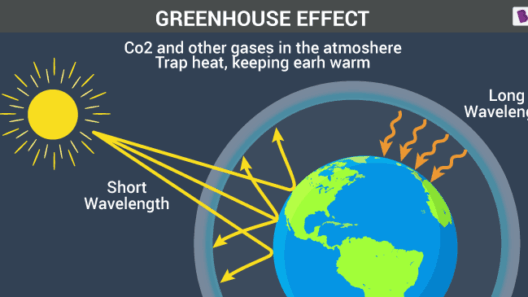The phenomenon of escalating temperatures is more than just a fleeting statistic; it is a harbinger of extreme heat that could soon become commonplace. As climate change accelerates, scientists warn that regions of the globe may regularly experience summer days with temperatures soaring to 120 degrees Fahrenheit or higher. How long until these ferocious temperatures become a reality? This inquiry not only reflects our concern for environmental stability but also compels an examination of the underlying causes, regional vulnerabilities, and the multifaceted effects of extreme heat on ecosystems and human societies.
To fully grasp the implications of 120-degree summers, it’s essential first to explore the root causes of climate change. Human activity, primarily through the combustion of fossil fuels, has augmented the concentration of greenhouse gases in the atmosphere. Carbon dioxide and methane act as insulators, trapping heat and leading to a gradual rise in global temperatures. This phenomenon is not uniform across the planet; some regions are warming at an alarming rate. Projections suggest that certain arid and semi-arid landscapes may face extreme heat conditions within the next few decades, fundamentally altering the fabric of those environments.
As the planet warms, the frequency of heatwaves has already begun to rise. Data from various climate models indicate that heatwaves are becoming increasingly severe and prolonged. This is particularly poignant in regions that historically enjoyed temperate climates, leaving inhabitants unprepared for the onslaught of extreme summer conditions. The alarming projections illuminate a dire future where 120-degree days could become the norm, not an anomaly. The consequences of such a transformation are profound, affecting everything from agriculture to human health.
Agricultural systems are incredibly sensitive to temperature changes. Crop yields are directly impacted by extreme heat, which can exacerbate water scarcity and soil degradation. Many staple crops, including wheat and corn, exhibit diminished growth under excessively high temperatures. This jeopardizes food security, especially in low-lying regions where agriculture forms the backbone of local economies. Additionally, extreme heat can lead to increased pest populations, further undermining crop production. Farmers may find themselves facing unprecedented challenges, necessitating a reevaluation of farming practices and crop selection.
Moreover, the implications for human health cannot be overstated. Prolonged exposure to high temperatures has been linked to a rise in heat-related illnesses, such as heat exhaustion and heat stroke. Vulnerable populations, including the elderly and those with pre-existing health conditions, are particularly at risk. The stress that heat imposes on the human body can exacerbate chronic illnesses, leading to greater reliance on healthcare systems and potentially overwhelming them. Additionally, the psychological effects of extreme heat should not be overlooked. Studies indicate that higher temperatures can correlate with increased incidences of anxiety and depression, highlighting the multifaceted impacts of climate change on mental health.
The urban heat island effect further complicates the issue. Cities often exhibit significantly higher temperatures than their rural counterparts due to human activity and infrastructure. The proliferation of concrete and asphalt absorbs and retains heat, creating microclimates that can reach perilously high temperatures. As global populations continue to urbanize, more individuals will be exposed to extreme heat anomalies. Mitigating the urban heat island effect through methods such as green roofs, urban forestry, and reflective surfaces becomes increasingly urgent as cities brace for inevitable climatic shifts.
Water resources, too, are under siege. Prolonged extreme heat can accelerate evaporation rates and deplete reservoirs. As drought becomes more common, the strain on freshwater supplies will amplify conflict over water usage, particularly in regions already grappling with scarcity. Policy frameworks may need to adapt to address not only the availability of water but also the distribution of climate-related resources to mitigate the consequences of extreme conditions. Innovation in water conservation technologies and policies aimed at sustainable water management will be critical for surviving in a hotter climate.
In the face of the impending reality of 120-degree summers, a call to action emerges. Climate adaptation strategies must be employed to build resilience against extreme heat. Communities can implement early warning systems for heat events, enhance public health preparedness, and develop adaptive infrastructure designed to mitigate heat impacts. Public awareness campaigns can educate citizenry on how to cope in extreme conditions and foster initiatives aimed at community engagement in climate action.
Lastly, addressing the climate crisis necessitates a global approach. It is imperative for nations to collaborate on climate agreements that mandate reductions in greenhouse gas emissions. Transitioning to renewable energy sources, enhancing energy efficiency, and fostering sustainable urban development are all steps that can curtail the rise of extreme heat events. By taking proactive measures today, society can aim to alter the trajectory of climate change and stave off the deluge of scorching summers that could define our future.
In conclusion, the specter of 120-degree summers looms closer with each passing year. The convergence of climate science, agricultural viability, public health, urban planning, and global collaboration reveals the intricate web of challenges we face in navigating this reality. As we confront the exigencies of climate change, a comprehensive understanding of its impacts is essential for crafting a viable and sustainable future. The choices we make today will determine the climate of tomorrow.







